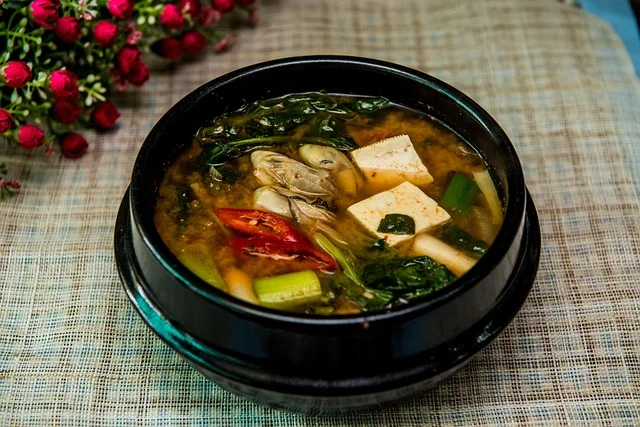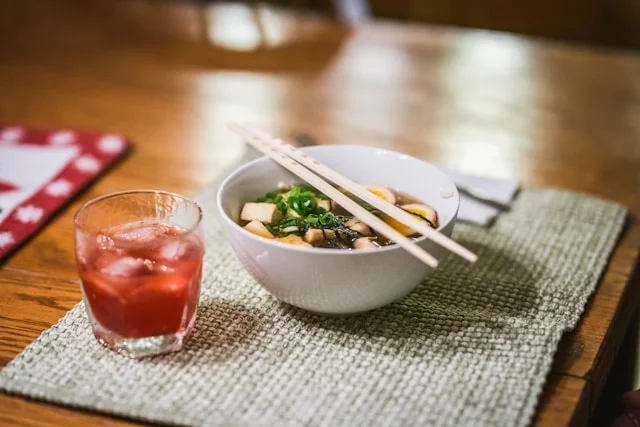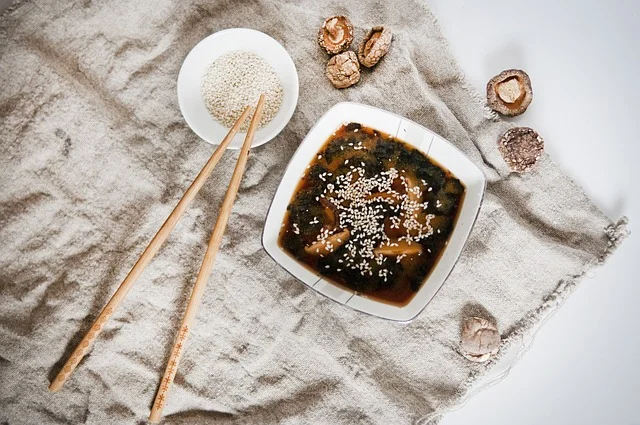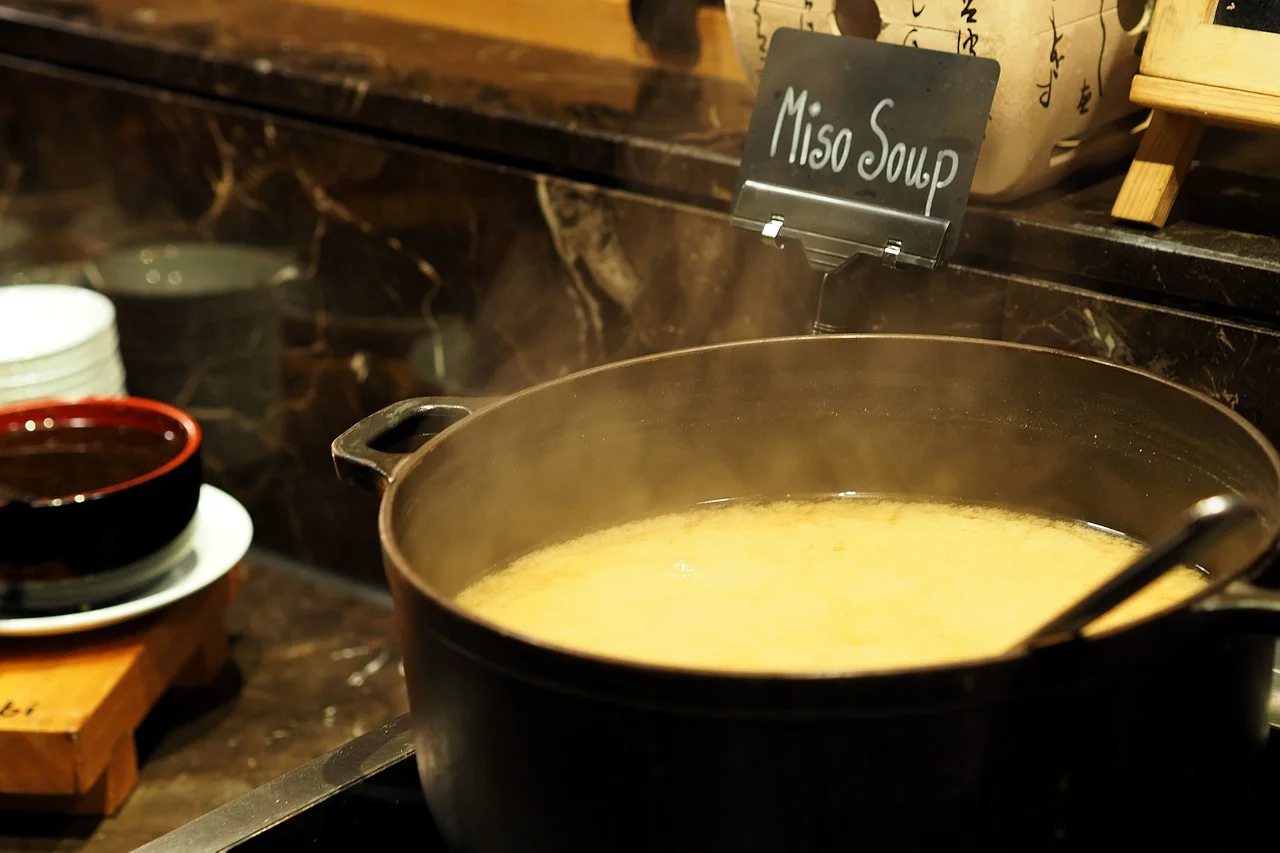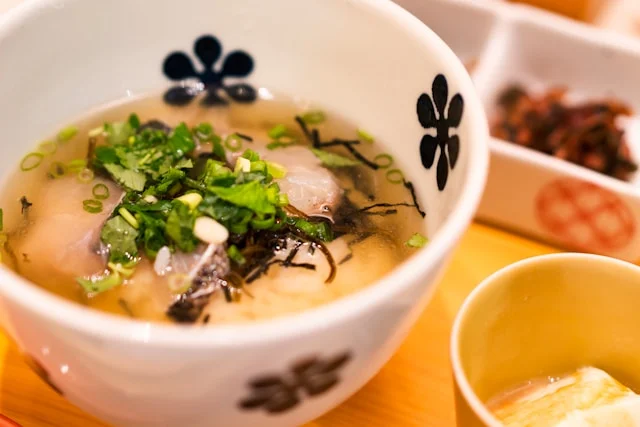Embracing Simplicity: The Delightful Essence of Miso Soup
Take a journey into the heart of Japanese cuisine with the humble
yet flavorful Miso soup. Originating from ancient Japan, this traditional dish has evolved
into a beloved culinary staple, cherished for its comforting warmth, umami-rich broth, and
nourishing ingredients. Join us as we explore the history, ingredients, and cultural
significance of Miso soup.
Ancient Origins: Tracing the Roots of Miso Soup
Miso soup traces its roots back to the Jomon period in ancient
Japan, over 2,000 years ago. During this time, fermented soybean paste, known as miso,
became a dietary staple due to its long shelf life and nutritional benefits. Over the
centuries, miso evolved into a versatile ingredient used in various Japanese dishes, with
Miso soup emerging as one of its most iconic preparations.
Essential Components: Crafting the Perfect Miso Soup
At the heart of Miso soup lies its flavorful broth, made by
dissolving miso paste in hot water or dashi, a traditional Japanese stock. The type of miso
used can vary, with options including white (shiro), red (aka), and mixed (awase) miso, each
offering distinct flavors and levels of sweetness. Additional ingredients such as tofu,
seaweed (usually wakame), green onions, and sometimes vegetables or seafood are added to
enhance the soup's texture and depth of flavor.
Nourishment and Wellness: The Health Benefits of Miso Soup
Beyond its delicious taste, Miso soup boasts a range of health benefits. Miso paste is rich
in essential nutrients, including protein, vitamins, and minerals, making it a nutritious
addition to any diet. Additionally, miso contains probiotics, which promote gut health and
digestion. The combination of miso, seaweed, and tofu in Miso soup creates a wholesome and
satisfying meal that nourishes the body and comforts the soul.
Cultural Significance: Miso Soup in Japanese Cuisine
In Japanese culture, Miso soup holds a special place as a symbol of home-cooked comfort and
hospitality. It is often enjoyed as a warming breakfast dish, a comforting lunch, or a
soothing accompaniment to dinner. Miso soup is also served as part of traditional Japanese
New Year's celebrations, symbolizing renewal and good fortune for the coming year. Its
versatility and simplicity make Miso soup a beloved and enduring tradition in Japanese
cuisine.
Modern Adaptations: Innovations on a Time-Honored Dish
While traditional Miso soup remains a beloved classic, chefs around the world have put their
own creative twists on this iconic dish. Variations may include the addition of ingredients
such as mushrooms, spinach, or shrimp, as well as the use of different types of miso for
unique flavor profiles. Whether enjoyed in its traditional form or as a contemporary
interpretation, Miso soup continues to captivate diners with its comforting warmth and
satisfying umami taste.
Conclusion: Savoring the Soul of Miso Soup
As we savor the delightful essence of Miso soup, we honor its rich history, nourishing
ingredients, and cultural significance. Whether enjoyed on a chilly winter's day or as a
comforting meal any time of year, Miso soup offers a taste of tradition and a reminder of
the simple joys of life. So, the next time you crave a bowl of warmth and comfort, indulge
in the timeless goodness of Miso soup and experience its soul-satisfying flavors.
